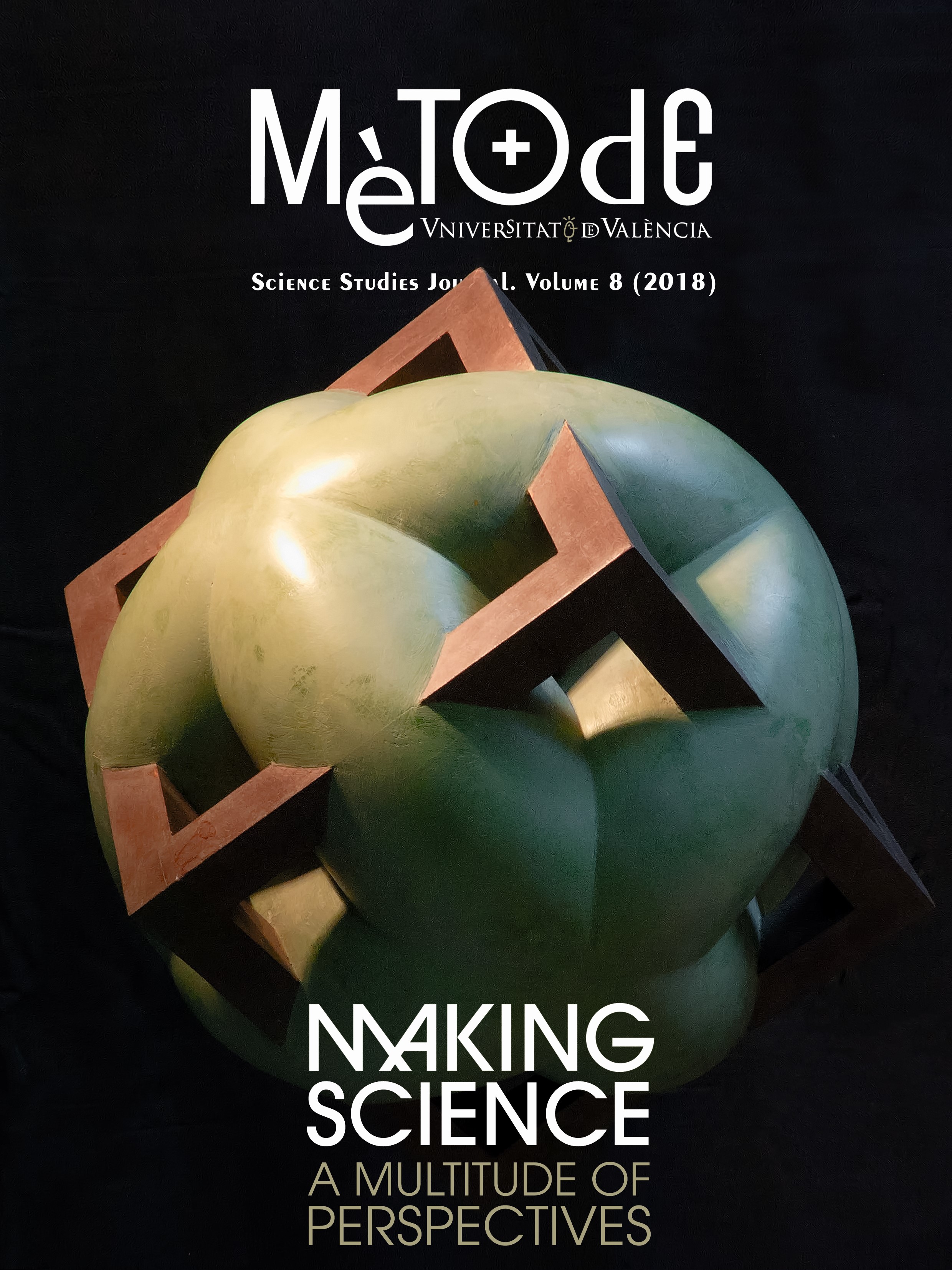Divan couches and gurus: The origin and dangers of clinical pseudopsychology
DOI:
https://doi.org/10.7203/metode.8.9977Keywords:
pseudoscience, psychology, psychoanalysis, New Age, psychotherapies Abstract
Abstract
Pseudoscience is alarmingly present in the context of clinical psychology and is also very dangerous. As a set of pseudoscientific ideas, clinical pseudopsychology has a peculiar characteristic: it has established an entire tradition parallel to psychology, with numerous branches and interrelated theoretical and practical developments. In this paper we will review that tradition, from pseudoscientific hypnosis to psychoanalysis, and from New Age to present-day neuropseudoscience. We will then review some of the dangers of pseudoscience related to mental disorders.
 Downloads
Downloads
 References
References
Braun, K. A., Ellis, R., & Loftus, E. F. (2002). Make my memory: How advertising can change our memories of the past. Psychology & Marketing, 19(1), 1–23. doi: 10.1002/mar.1000
Cuijpers, P., Sijbrandij, M., Koole, S. L., Andersson, G., Beekman, A. T., & Reynolds, C. F. (2013). The efficacy of psychotherapy and pharmacotherapy in treating depressive and anxiety disorders: A meta-analysis of direct comparisons. World Psychiatry, 12(2), 137–148. doi: 10.1002/wps.20038
Darnton, R. (1968). Mesmerism and the end of the Enlightenment in France.Cambridge: Harvard University Press.
Fasce, A. (2017). Los parásitos de la ciencia. Una caracterización psicocognitiva del engaño pseudocientífico. Theoria: An International Journal of Theory, History and Foundations of Science, 32(3): 345-363. doi: 10.1387/theoria.17775
Gauld, A. (1992). A history of hypnotism.New York: Cambridge University Press.
Gelfand, T., & Kerr, J. (1992). Freud and the history of psychoanalysis.New Jersey: The Analytic Press.
Hansson, S. O. (2009). Cutting the Gordian Knot of demarcation. International Studies in the Philosophy of Science, 23(3), 237–243. doi: 10.1080/02698590903196007
Heelas, P. (1996). The New Age Movement. New Jersey: Blackwell Publishing.
Herbert, J. D., Lilienfeld, S. O., Lohr, J. M., Montgomery, R. W., T O’Donohue, W., Rosen, G. M., & Tolin, D. F. (2000). Science and pseudoscience in the development of eye movement desensitization and reprocessing: Implications for clinical psychology. Clinical Psychology Review, 20(8), 945–971. doi: 10.1016/S0272-7358(99)00017-3
Hughes, S., Lyddy, F., & Lambe, S. (2013). Misconceptions about psychological science: A review. Psychology Learning and Teaching, 12(1), 20–31. doi: 10.2304/plat.2013.12.1.20
Johnson, M., & Pigliucci, M. (2004). Is knowledge about science associated with higher skepticism of pseudoscientific claims? The American Biology Teacher, 66(8), 536–548. doi: 10.2307/4451737
Lilienfeld, S. O. (2007). Psychological treatments that cause harm. Perspectives on Psychological Science, 2(1), 53–70. doi: 10.1111/j.1745-6916.2007.00029.x
Lilienfeld, S. O., Lynn S. J., & Lohr, J. M. (Eds). (2003). Science and pseudoscience in clinical psychology.New York: The Guilford Press.
Lilienfeld, S., Lohr, J., & Morier, D. (2004). The teaching of courses in the science and pseudoscience of psychology: Useful resources. Teaching of Psychology, 28(3), 182–191. doi: 10.1207/S15328023TOP2803_03
Loftus, E., & Ketcham, K. (1994). The myth of repressed memory.New York: St. Martin’s Press.
Majima, Y. (2015). Belief in pseudoscience, cognitive style and science literacy. Applied Cognitive Psychology, 29(4), 552–559. doi: 10.1002/acp.3136
Marcus, D. K., O’Connell, D., Norris, A. L., & Sawaqdeh, A. (2014). Is the Dodo bird endangered in the 21st century? A meta-analysis of treatment comparison studies. Clinical Psychology Review, 34(7), 519–530. doi: 10.1016/j.cpr.2014.08.001
Meyer, C. (Ed.). (2005). Le livre noir de la psychanalyse: Vivre penser et aller mieux sans Freud. Paris: Les Arènes.
Salkovskis, P. (2002). Review: Eye movement desensitization and reprocessing is not better than exposure therapies for anxiety or trauma. Evidence-based Mental Health, 5(1), 13. doi: 10.1136/ebmh.5.1.13
Singer, M., & Lalich, J. (1996). Crazy therapies: What are they? Do they work? New Jersey: Jossey-Bass.
Stapleton, P., Chatwin, H., Boucher, E., Crebbin, S., Scott, S., Smith, D., & Purkis, G. (2015). Use of complementary therapies by registered psychologists: An international study. Professional Psychology: Research and Practice, 46(3), 190–196. doi: 10.1037/pro0000015
Smit, Y., Huibers, M. J., Ioannidis, J. P., Van Dyck, R., Van Tilburg, W., & Arntz, A. (2012). The effectiveness of long-term psychoanalytic psychotherapy: A meta-analysis of randomized controlled trials. Clinical psychology review, 32(2), 81–92. doi: 10.1016/j.cpr.2011.11.003
Downloads
Published
How to Cite
-
Abstract2683
-
PDF1349
Issue
Section
License
![]()
All the documents in the OJS platform are open access and property of their respective authors.
Authors publishing in the journal agree to the following terms:
- Authors keep the rights and guarantee Metode Science Studies Journal the right to be the first publication of the document, licensed under a Creative Commons Attribution-NonCommercial-NoDerivatives 4.0 International License that allows others to share the work with an acknowledgement of authorship and publication in the journal.
- Authors are allowed and encouraged to spread their work through electronic means using personal or institutional websites (institutional open archives, personal websites or professional and academic networks profiles) once the text has been published.





